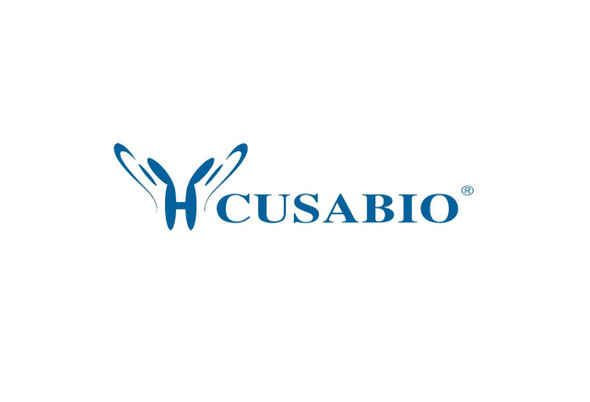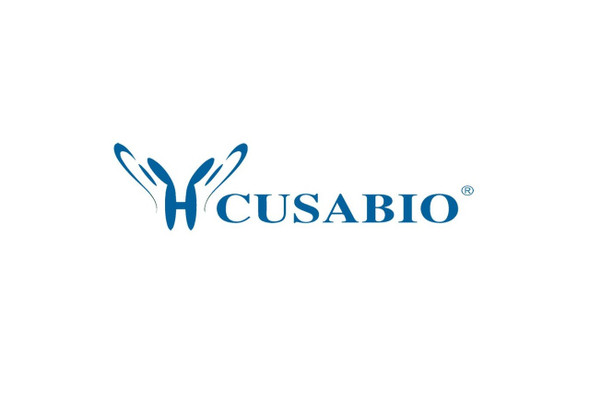Cusabio Virus & Bacteria Recombinants
Recombinant Porcine parvovirus Capsid protein VP1, partial | CSB-EP323858PQB
- SKU:
- CSB-EP323858PQB
- Availability:
- 13 - 23 Working Days
Description
Recombinant Porcine parvovirus Capsid protein VP1, partial | CSB-EP323858PQB | Cusabio
Alternative Name(s): Coat protein VP1
Gene Names: N/A
Research Areas: Others
Organism: Porcine parvovirus (strain NADL-2) (PPV)
AA Sequence: MAPPAKRARGLTLPGYKYLGPGNSLDQGEPTNPSDAAAKEHDEAYDKYIKSGKNPYFYFSAADEKFIKETEHAKDYGGKIGHYFFRAKRAFAPKLSETDSPTTSQQPEVRRSPRKHPGSKPPGKRPAPRHIFINLAKKKAKGTSNTNSNSMSENVEQHNPINAGTELSATGNESGGGGGGGGGRGAGGVGVSTGTFNNQTEFQYLGE
Source: E.coli
Tag Info: N-terminal 6xHis-tagged
Expression Region: 1-207aa
Sequence Info: Partial
MW: 26.1 kDa
Purity: Greater than 90% as determined by SDS-PAGE.
Relevance: Capsid protein self-assembles to form an icosahedral capsid with a T=1 symmetry, about 22 nm in diameter, and consisting of 60 copies of two size variants of the capsid proteins, VP1 and VP2, which differ by the presence of an N-terminal extension in the minor protein VP1. The capsid encapsulates the genomic ssDNA. Capsid proteins are responsible for the attachment to host cell receptors. This attachment induces virion internalization predominantly through clathrin-dependent endocytosis. Binding to the host receptors also induces capsid rearrangements leading to surface exposure of VP1 N-terminus, specifically its phospholipase A2-like region and putative nuclear localization signal(s). VP1 N-terminus might serve as a lipolytic enzyme to breach the endosomal membrane during entry into host cell and might contribute to virus transport to the nucleus
Reference: "Porcine parvovirus: DNA sequence and genome organization." Ranz A.I., Manclus J.J., Diaz-Aroca E., Casal J.I. J. Gen. Virol. 70:2541-2553(1989)
Storage: The shelf life is related to many factors, storage state, buffer ingredients, storage temperature and the stability of the protein itself. Generally, the shelf life of liquid form is 6 months at -20?/-80?. The shelf life of lyophilized form is 12 months at -20?/-80?.
Notes: Repeated freezing and thawing is not recommended. Store working aliquots at 4? for up to one week.
Function: Capsid protein self-assembles to form an icosahedral capsid with a T=1 symmetry, about 22 nm in diameter, and consisting of 60 copies of two size variants of the capsid proteins, VP1 and VP2, which differ by the presence of an N-terminal extension in the minor protein VP1. The capsid encapsulates the genomic ssDNA. Capsid proteins are responsible for the attachment to host cell receptors. This attachment induces virion internalization predominantly through clathrin-dependent endocytosis. Binding to the host receptors also induces capsid rearrangements leading to surface exposure of VP1 N-terminus, specifically its phospholipase A2-like region and putative nuclear localization signal(s). VP1 N-terminus might serve as a lipolytic enzyme to breach the endosomal membrane during entry into host cell and might contribute to virus transport to the nucleus (By similarity).
Involvement in disease:
Subcellular Location: Virion, Host nucleus
Protein Families: Parvoviridae capsid protein family
Tissue Specificity:
Paythway:
Form: Liquid or Lyophilized powder
Buffer: If the delivery form is liquid, the default storage buffer is Tris/PBS-based buffer, 5%-50% glycerol. If the delivery form is lyophilized powder, the buffer before lyophilization is Tris/PBS-based buffer, 6% Trehalose, pH 8.0.
Reconstitution: We recommend that this vial be briefly centrifuged prior to opening to bring the contents to the bottom. Please reconstitute protein in deionized sterile water to a concentration of 0.1-1.0 mg/mL.We recommend to add 5-50% of glycerol (final concentration) and aliquot for long-term storage at -20?/-80?. Our default final concentration of glycerol is 50%. Customers could use it as reference.
Uniprot ID: P18546
HGNC Database Link: N/A
UniGene Database Link: N/A
KEGG Database Link: KEGG
STRING Database Link: N/A
OMIM Database Link: N/A









